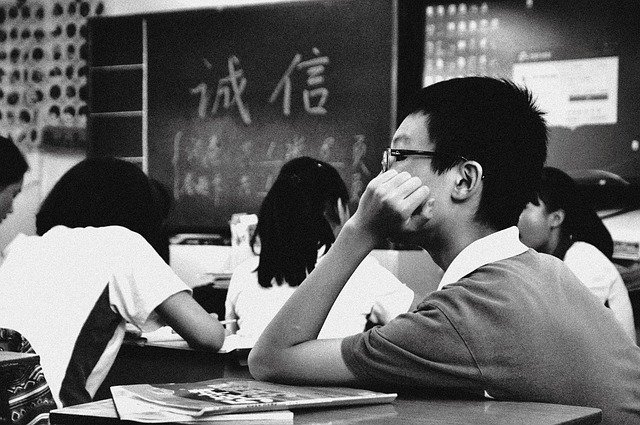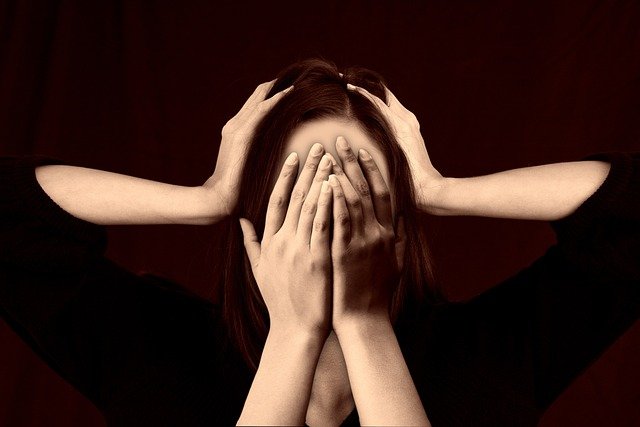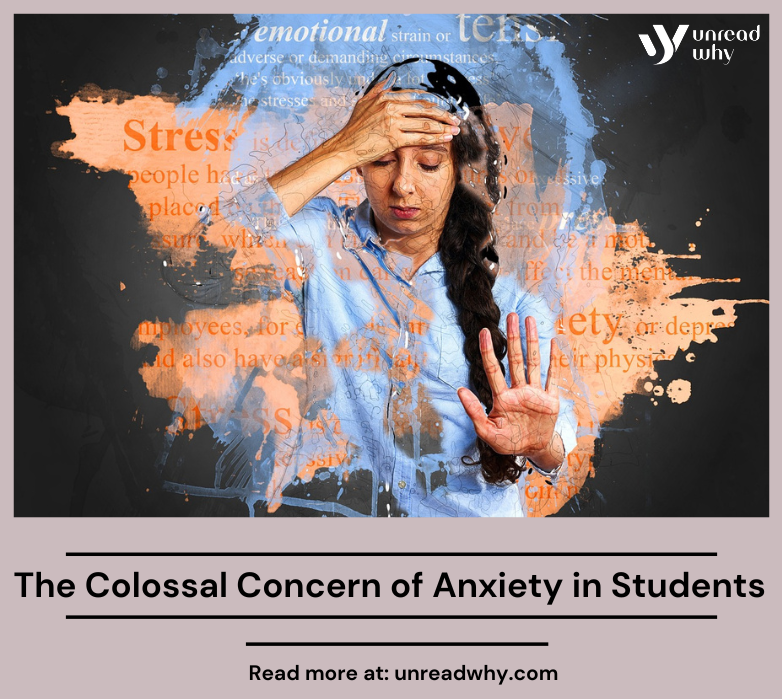Anxiety Meaning
Anxiety in students has been considered one of the primary issues that is rising globally. Anxiety disorder has been deemed as the issue that causes people to feel scared, stressed, and uneasy at times, which they would not normally feel during those situations. Factors such as familial pressure, competition, negative relationships with teachers, and bullying have been primary causes of anxiety in students.
Anxiety in Students Studying in College
American College Health Association, through the National College Health Assessment Fall 2018, conducted a survey among 19664 undergrads from 40 different colleges in the US, which showed that about 63% of the students suffered from anxiety. However, the more amusing fact was only 23% of them admitted to being treated by a professional for anxiety. Despite the vast mental health awareness in Western countries such as the US, 40% of the students could not or did not attain treatment. Reasons for anxiety in students studying in college are:
- Racism: State of Higher Education 2024 Report, a survey by Gallup-Lumina Foundations, presents that 1 out of 5 American African students suffer from anxiety due to racism in college, which has affected their enrolment rate to get lower and dropout rate to get higher.

- Academic Pressure: A survey for a research study published by the National Library of Medicine shows that anxiety in students is mainly determined among minority ethnic groups such as Asians, Hispanics, and African Americans who face more academic pressure from their families as they feel the need to justify their right to higher education and improve their family standing. It has led them to succumb to anxiety and depression.
- Lack of acceptance: Students from Non-binary and LGBTQ communities often feel the lack of acceptance in colleges. At the age of 17 or 18, they just begin understanding their sexual orientation, which is often disturbed by the lack of acceptance. A study published by the National Library of Medicine shows that during adolescence, peer opinions are highly valued, due to which many students have fallen prey to extensive anxiety and depression.
- Social anxiety: Social anxiety in students is caused by the pressure to fit in in college to be popular. It often leads them to make errors in judgment as they only focus on gaining social recognition, which negatively affects their mental health.
Anxiety in Students Studying in School
CDC has presented a report which states that 9.4% of children (5.8 million approx.) between the ages of 3 and 17 have been diagnosed with anxiety disorder. Even though most schools have appointed counsellors to help the students in need, the limited budget has tied their hands to take rational action towards mitigating anxiety in students. There are several reasons that school students are facing anxiety globally.
- Divorce of Parents: Children between the ages of 6 and 15 go through an extensive mental transformation, and thus, the divorce of parents at that age leads the kids to face separation anxiety and social anxiety. Separation anxiety means that kids are not able to focus on their schoolwork as they face separation from one of two primary caregivers. The profound sadness makes them face social anxiety as well, given the fact they lack the love and care they got at home; they seek it in terms of approval from peers. It creates long-term trauma for the children, which often leads to abandonment issues and depression in their adulthood.

- Bullying: it has been seen that out of 5, 1 student between the ages of 12 and 18 faces bullying at school, which forces them to skip their classes. It not only affects their classroom engagement but also affects their educational interest. Physical and verbal bullying leads children to doubt their abilities and feel a lack of confidence, which often transforms into pent-up rage and violence in their adolescence and adulthood.
- Family struggling with addiction: Parents or siblings involved in substance abuse often lead the children at home to feel neglected. Often, children from this kind of family present signs of abuse and emotional trauma, which not only cause anxiety but also ADHD and depression in later life. Given these situations with their families, they have to act as caregivers, which leads them to feel emotional distress, causing extensive anxiety in students.

- Math anxiety: Math anxiety is the kind of anxiety in students who show a fear of numbers, tests, and solving problems. Medical professional have often used fMRI scans of the brain to see that there is a rise in brain activity in areas related to pain experience and threat detection during their confrontation with mathematics. The lack of awareness regarding this issue in tutors can often lead them to unintentionally create a hostile environment for the students facing anxiety, leading to their disengagement.
Ways for Students to Deal with Anxiety
- 3-3-3 Rule: This is one of the most suggested steps for dealing with anxiety in students mainly among adolescents and young adults. As per this, while an anxiety attack is induced, it says to name 3 sounds they hear, 3 things they see, and 3 body parts to move. It shakes their focus from the crippling anxiety to these small tasks making the attack manageable.

- Meditation: The practice of mindfulness through meditation has been suggested to young adults in order to deal with anxiety for a very long time, and after numerous research studies, it has been found that meditation helps in decreasing the day’s stress and helps to restore internal peace. It has been deemed successful in many cases as students are able to calm their chaotic minds and restore positivity.
- Travelling: A change of scenery often helps children and adolescents feel safe, leading to reduced anxiety attacks. The students in anxiety due to bullying or hostility in schools associate the classroom with negative feelings, and thus, a change of scenery often helps.
Therapies for Students with Anxiety
- Cognitive behaviour therapy helps transform negative thoughts into positive ones for students in anxiety.
- Narrative therapy, which is also known as talk therapy, is where the healthcare professional aims to understand the underlying cause of the anxiety by talking to the patients vividly.
- Exposure therapy, where the patients are asked to confront their primary source of anxiety, often works for students dealing with anxiety due to their phobias or past traumas. The professionals take this opportunity to help the patients navigate through their key issues.
Students today are the future of tomorrow, and the rising concern of anxiety in students, along with other mental health issues, urges educators and parents to provide as much help as possible to make them feel safe.
Helpline for UK: 111- First response service
Helpline for US: 1-800-950-NAMI (6264)- National Alliance on Mental Illness HelpLine
Helpline for India: 91-8376804102- FORTIS HOSPITAL NATIONAL HELPLINE (See more)


